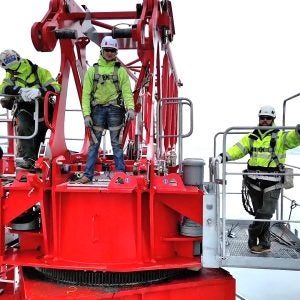PDI National Cranes, part of the PDI Group of Companies in King, Ontario, Canada, recently purchased a new Link-Belt Cranes 175|AT all terrain crane. The crane was added to the company’s taxi fleet which specialises in commercial, industrial, and general construction in the greater Toronto, Ontario area.
One of the main applications the crane is being used for is for the building of cell towers. According to Dallen Rands, branch manager for PDI National Cranes, the 175-ton (150-tonne) all terrain crane is ideal for this type of work due to its ease of transport, with only one overflow truck required, and its quick setup time. PDI National Cranes operator Peter Grummy estimates the crane can be set up in 30 to 40 minutes.
“In Ontario we can run boom over the front, so no dolly is required,” said Rands. “Then, we only need one truck and once we stack counterweight on the deck of the crane from the overflow, now we have a clean work platform for the fly – which we typically use the SmartFly for cell tower work. It’s a very clean setup without anything extra.”
A common cell tower setup for PDI is usually just over 200 ft. (60.9 m) tall and made up of five different segments. The base triangular section of the cell tower is erected in place on the ground and can measure 24 ft. (7.3 m) wide, leg to leg. The tower segments taper as it rises, with the largest section 57 ft. (17.3 m) tall. The segments vary in weight from 6,000 to 8,000 lbs. (2 721 to 3 628 kg).
“Once I get the next section within two to three feet, I am able to fine meter on the crane, and on the camera as well as on the winch to precisely put it in place, just like the guys want,” said Grummy.
PDI National Cranes is a taxi rental business so being able to quickly setup for varying cell towers or other applications is important.
“The way the crane walks with full counterweight and jib erected on a job, that exceeded my expectations,” said Grumny. “A recent project we did involved moving the crane with the counterweights and jib erected. It was a total of eight setups and it was totally amazing how fast the crane could move from set up to set up.”






